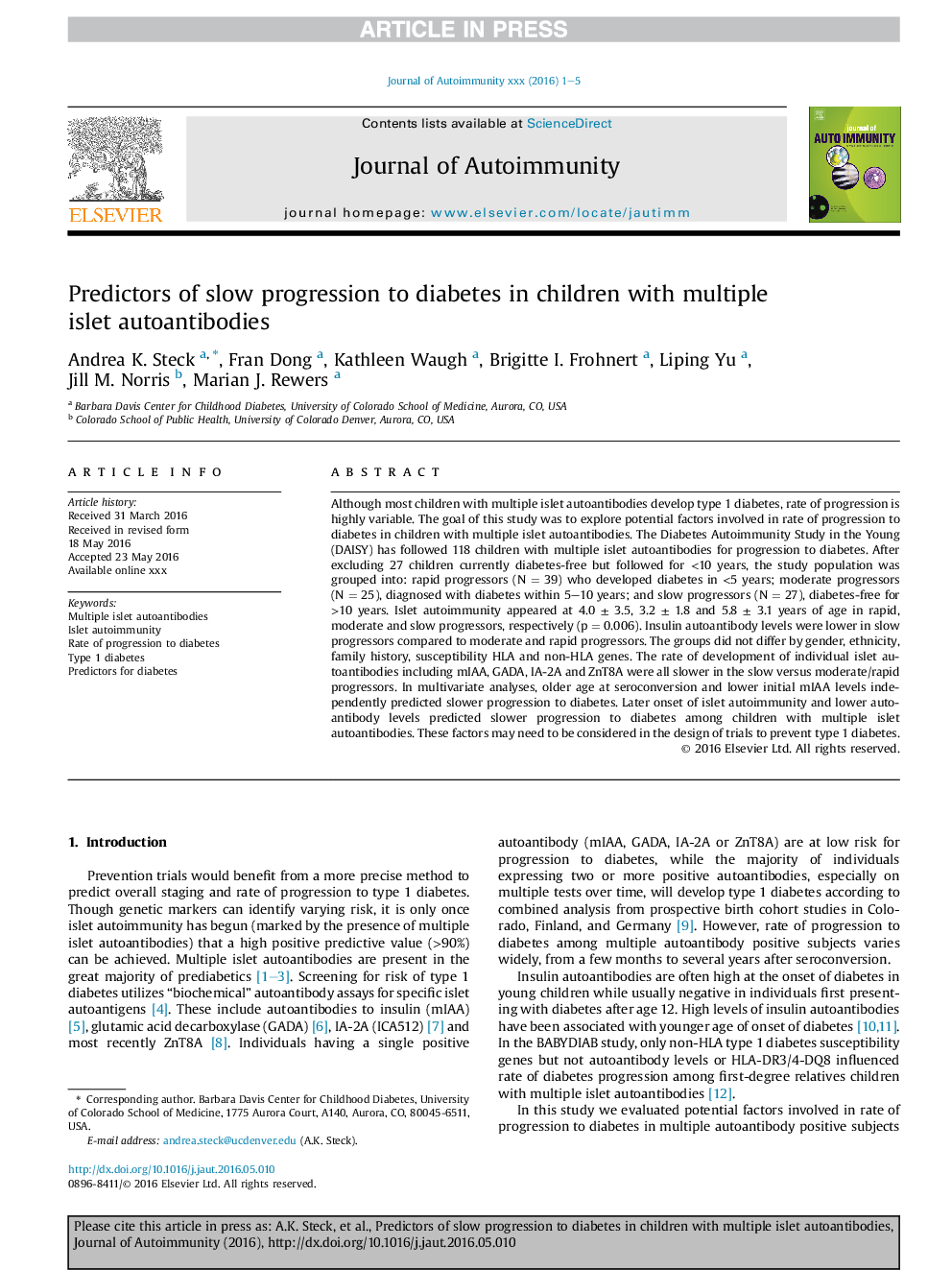| Article ID | Journal | Published Year | Pages | File Type |
|---|---|---|---|---|
| 6119103 | Journal of Autoimmunity | 2016 | 5 Pages |
Abstract
Although most children with multiple islet autoantibodies develop type 1 diabetes, rate of progression is highly variable. The goal of this study was to explore potential factors involved in rate of progression to diabetes in children with multiple islet autoantibodies. The Diabetes Autoimmunity Study in the Young (DAISY) has followed 118 children with multiple islet autoantibodies for progression to diabetes. After excluding 27 children currently diabetes-free but followed for <10 years, the study population was grouped into: rapid progressors (N = 39) who developed diabetes in <5 years; moderate progressors (N = 25), diagnosed with diabetes within 5-10 years; and slow progressors (N = 27), diabetes-free for >10 years. Islet autoimmunity appeared at 4.0 ± 3.5, 3.2 ± 1.8 and 5.8 ± 3.1 years of age in rapid, moderate and slow progressors, respectively (p = 0.006). Insulin autoantibody levels were lower in slow progressors compared to moderate and rapid progressors. The groups did not differ by gender, ethnicity, family history, susceptibility HLA and non-HLA genes. The rate of development of individual islet autoantibodies including mIAA, GADA, IA-2A and ZnT8A were all slower in the slow versus moderate/rapid progressors. In multivariate analyses, older age at seroconversion and lower initial mIAA levels independently predicted slower progression to diabetes. Later onset of islet autoimmunity and lower autoantibody levels predicted slower progression to diabetes among children with multiple islet autoantibodies. These factors may need to be considered in the design of trials to prevent type 1 diabetes.
Keywords
Related Topics
Life Sciences
Immunology and Microbiology
Immunology
Authors
Andrea K. Steck, Fran Dong, Kathleen Waugh, Brigitte I. Frohnert, Liping Yu, Jill M. Norris, Marian J. Rewers,
